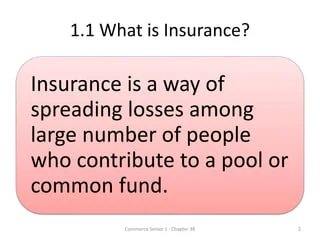Facts About Pacific Prime Revealed
Wiki Article
See This Report on Pacific Prime
Table of ContentsSome Known Facts About Pacific Prime.The Facts About Pacific Prime UncoveredSome Of Pacific PrimeAll About Pacific PrimePacific Prime Can Be Fun For Anyone

This is because the data were accumulated for a period of strong financial performance. Of the estimated 42 million individuals who were without insurance, all but concerning 420,000 (about 1 percent) were under 65 years of age, the age at which most Americans come to be eligible for Medicare; 32 million were grownups between ages 18 and 65, around 19 percent of all grownups in this age group; and 10 million were kids under 18 years old, about 13.9 percent of all youngsters (Mills, 2000).
These estimates of the variety of persons without insurance are generated from the yearly March Supplement to the Existing Populace Study (CPS), performed by the Census Bureau. Unless or else kept in mind, national estimates of people without wellness insurance and proportions of the populace with various sort of coverage are based on the CPS, the most commonly utilized resource of price quotes of insurance policy coverage and uninsurance rates.
Pacific Prime Fundamentals Explained

Still, the CPS is especially useful because it generates yearly quotes fairly swiftly, reporting the previous year's insurance coverage approximates each September, and since it is the basis for a constant set of quotes for greater than 20 years, enabling evaluation of patterns in coverage over time. For these factors, in addition to the comprehensive use of the CPS in various other research studies of insurance protection that exist in this record, we depend on CPS quotes, with limitations kept in mind.

The quote of the number of without insurance people broadens when a population's insurance policy status is tracked for numerous years. Over a three-year period starting early in 1993, 72 million people, 29 percent of the U.S. https://www.huntingnet.com/forum/members/pacificpr1me.html. populace, were without coverage for at the very least one month. Within a solitary year (1994 ), 53 million people experienced a minimum of a month without insurance coverage (Bennefield, 1998a)
Six out of every ten without insurance grownups are themselves utilized. Although working does improve the chance that a person and one's family participants will certainly have insurance coverage, it is not an assurance. Also members of families with 2 full-time breadwinner have practically a one-in-ten chance of being without insurance (9.1 percent uninsured rate) (Hoffman and Pohl, 2000).
The Ultimate Guide To Pacific Prime
New immigrants account for a considerable percentage of people without medical insurance. One analysis has associated a substantial portion of the recent development in the dimension of the united state uninsured population to immigrants who showed up in the nation in between 1994 and 1998 (Camarota and Edwards, 2000). Current immigrants (those who concerned the United States within the previous four years) do have a high rate of being uninsured (46 percent), however they and their children account for just 6 percent of those without insurance coverage across the country (Holahan et al., 2001).The connection in between medical insurance and accessibility to care is well established, as recorded later on in this chapter. The partnership in between wellness insurance coverage and health and wellness results is neither direct neither straightforward, a considerable professional and wellness services research literary works web links health and wellness insurance protection to enhanced access to care, better top quality, and enhanced personal and populace health and wellness status.
Levels of evaluation for taking a look at the impacts of uninsurance. This discussion of medical insurance coverage concentrates mostly on the U.S. population under age 65 because practically all Americans 65 and older have Medicare or other public insurance coverage. Additionally, it focuses especially on those with no medical insurance for any length of time.
Some Known Details About Pacific Prime
The issues faced by the underinsured are in some respects comparable to those dealt with by the uninsured, although they are usually less severe. Wellness insurance i was reading this coverage, however, is neither necessary neither sufficient to gain accessibility to medical solutions. The independent and direct effect of wellness insurance protection on access to health solutions is well established.
Others will certainly obtain the health and wellness treatment they require also without medical insurance, by paying for it expense or seeking it from suppliers who supply care cost-free or at extremely subsidized prices. For still others, wellness insurance alone does not make sure receipt of care as a result of other nonfinancial obstacles, such as a lack of health and wellness treatment carriers in their community, minimal access to transportation, illiteracy, or etymological and cultural differences.
Some Known Questions About Pacific Prime.
Official study concerning uninsured populations in the United States dates to the late 1920s and early 1930s when the Committee on the Expense of Healthcare generated a collection of records about financing physician office check outs and hospital stays. This issue became significant as the numbers of medically indigent climbed up during the Great Anxiety.Report this wiki page